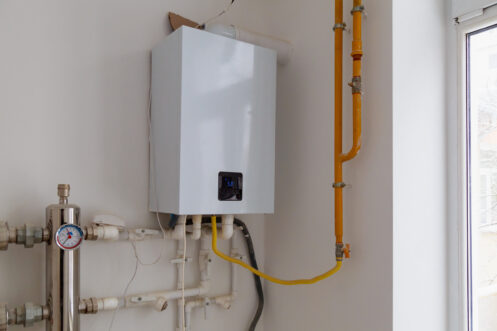Tips on How to Maintain Your Home's Hot Water System Functioning WellEssential Care Strategies for Your Home's Hot Water System
Tips on How to Maintain Your Home's Hot Water System Functioning WellEssential Care Strategies for Your Home's Hot Water System
Blog Article
What are your beliefs on Water Heater Maintenance Tips You Can't Afford to Forget?

Warm water is important for everyday convenience, whether it's for a revitalizing shower or cleaning recipes. To ensure your hot water system runs effectively and lasts much longer, normal upkeep is key. This article gives useful ideas and insights on just how to maintain your home's warm water system to avoid disturbances and pricey repair work.
Intro
Maintaining your home's warm water system may seem overwhelming, but with a couple of basic steps, you can guarantee it operates smoothly for years to come. This guide covers everything from understanding your hot water system to DIY upkeep ideas and recognizing when to call specialist aid.
Relevance of Maintaining Your Hot Water System
Regular maintenance not only prolongs the life-span of your hot water system but likewise guarantees it operates effectively. Disregarding upkeep can lead to lowered efficiency, greater energy expenses, and also premature failing of the system.
Indicators Your Warm Water System Needs Upkeep
Understanding when your hot water system requires interest can prevent significant problems. Keep an eye out for indications such as irregular water temperature, weird noises from the heating system, or rustic water.
Understanding Your Hot Water System
Before diving right into upkeep tasks, it's useful to understand the standard elements of your hot water system. Generally, this consists of the hot water heater itself, pipes, anode rods, and temperature level controls.
Regular Monthly Maintenance Tasks
Normal monthly checks can aid capture minor concerns prior to they escalate.
Purging the Hot Water Heater
Flushing your hot water heater eliminates sediment buildup, improving performance and lengthening its life.
Monitoring and Replacing Anode Rods
Anode rods prevent deterioration inside the container. Checking and replacing them when broken is critical.
Checking and Changing Temperature Settings
Readjusting the temperature level settings ensures optimum efficiency and security.
DIY Tips for Maintenance
You can perform numerous upkeep tasks on your own to maintain your hot water system in top problem.
Checking for Leakages
Routinely evaluate pipes and connections for leakages, as these can result in water damages and higher costs.
Testing Pressure Relief Valves
Examining the pressure relief valve guarantees it functions appropriately and protects against excessive pressure accumulation.
Shielding Pipelines
Insulating hot water pipes minimizes heat loss and can save power.
When to Call a Specialist
While do it yourself maintenance is advantageous, some problems need expert know-how.
Complicated Concerns Requiring Expert Aid
Instances include significant leakages, electrical problems, or if your hot water heater is continually underperforming.
Routine Expert Upkeep Conveniences
Professional maintenance can consist of detailed examinations, tune-ups, and ensuring compliance with security criteria.
Conclusion
Regular maintenance of your home's hot water system is vital for effectiveness, long life, and price savings. By following these suggestions and understanding when to look for specialist aid, you can make certain a trusted supply of warm water without unexpected disruptions.
How to Maintain an Instant Hot Water Heater
Before tinkering with your hot water heater, make sure that it’s not powered on. You also have to turn off the main circuit breaker and shut off the main gas line to prevent accidents. Also turn off the water valves connected to your unit to prevent water from flowing into and out of the appliance. 2. When you’re done, you have to detach the purge valves’ caps. These look like the letter “T” and are situated on either side of the water valves. Doing so will release any pressure that has accumulated inside the valves while at the same time avoid hot water from shooting out and burning your skin. 3. When the purge valves’ caps are removed, you have to connect your hosing lines to the valves. Your unit should have come with three hoses but if it didn’t, you can purchase these things from any hardware or home repair shops. You can also get them from retail stores that sell water heating systems. Read the user’s manual and follow it to complete this task properly. When the hosing lines are connected, open the purge port’s valves. 4. You should never use harsh chemical cleaners or solutions when cleaning your unit. Make use of white vinegar instead. It should be undiluted and you’ll probably use about 2 gallons. 5. Now flush your water heater. This task should probably take about 40 minutes. We can’t give you specific directions for this because the procedure is carried out depending on the type, model and brand of your heater. With that being said, refer to the user’s manual. 6. When you’re done draining the unit, you have to turn off the purge port valves again. Remove the hosing lines that you earlier installed on each of the water valves. Put the valve caps (purge port) back in their respective places and be very careful so as not to damage the rubber discs that are found inside these caps. 7. Now that everything’s back in place, check your user’s manual again to find out how to reactivate your water heating system. 8. Once it is working, turn one of your hot water faucets on just to let air pass through the heater’s water supply pipes. Leave the tap on until water flows smoothly out of it. https://www.orrplumbing.com/blog/2014/september/how-to-maintain-an-instant-hot-water-heater/

I am very interested in Tips on Maintaining a Water Heater and I really hope you enjoyed reading the entry. Don't hesitate to set aside a second to share this write-up if you enjoyed it. Many thanks for your time. Kindly come by our website back soon.
Request A Quote Report this page